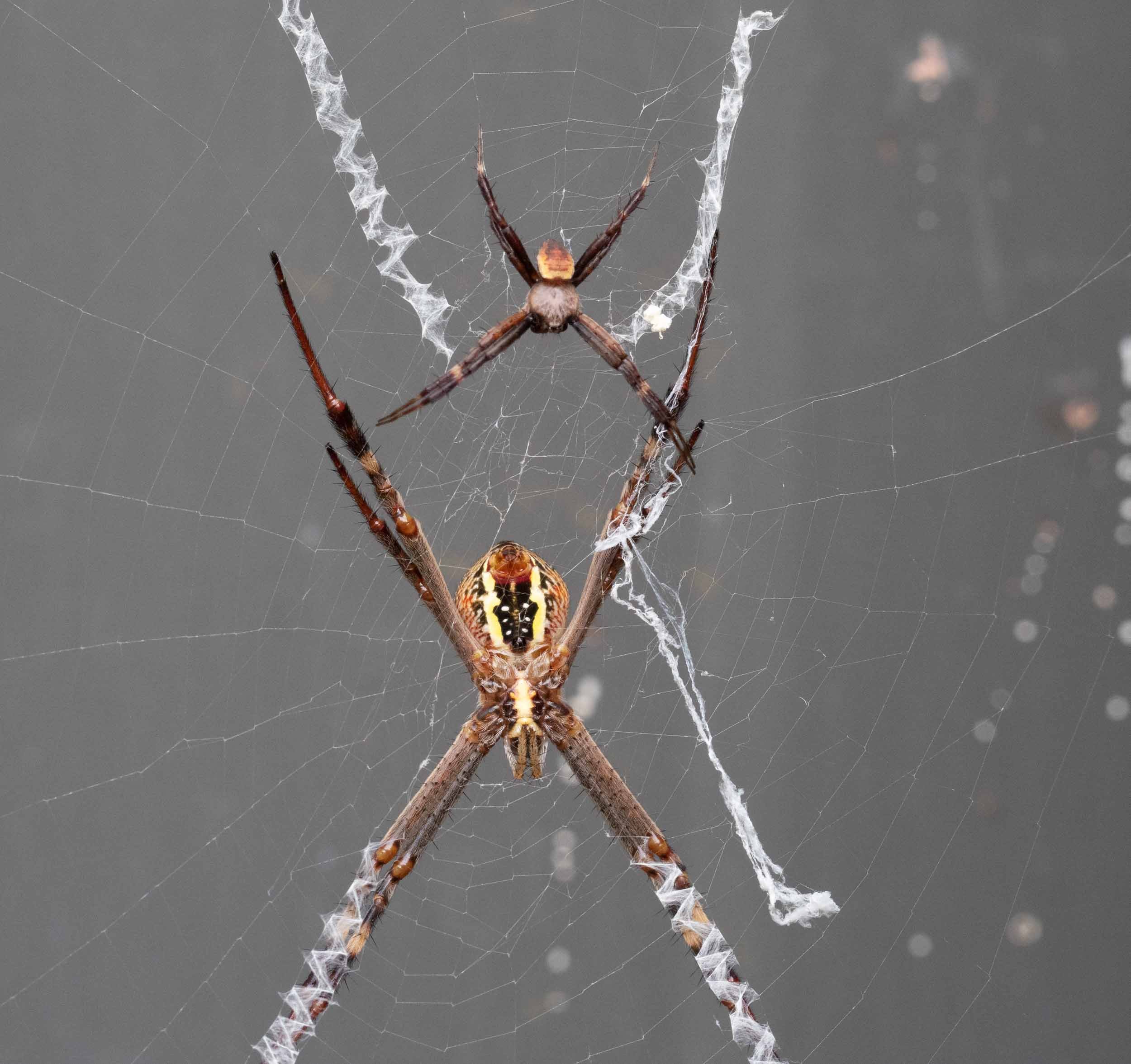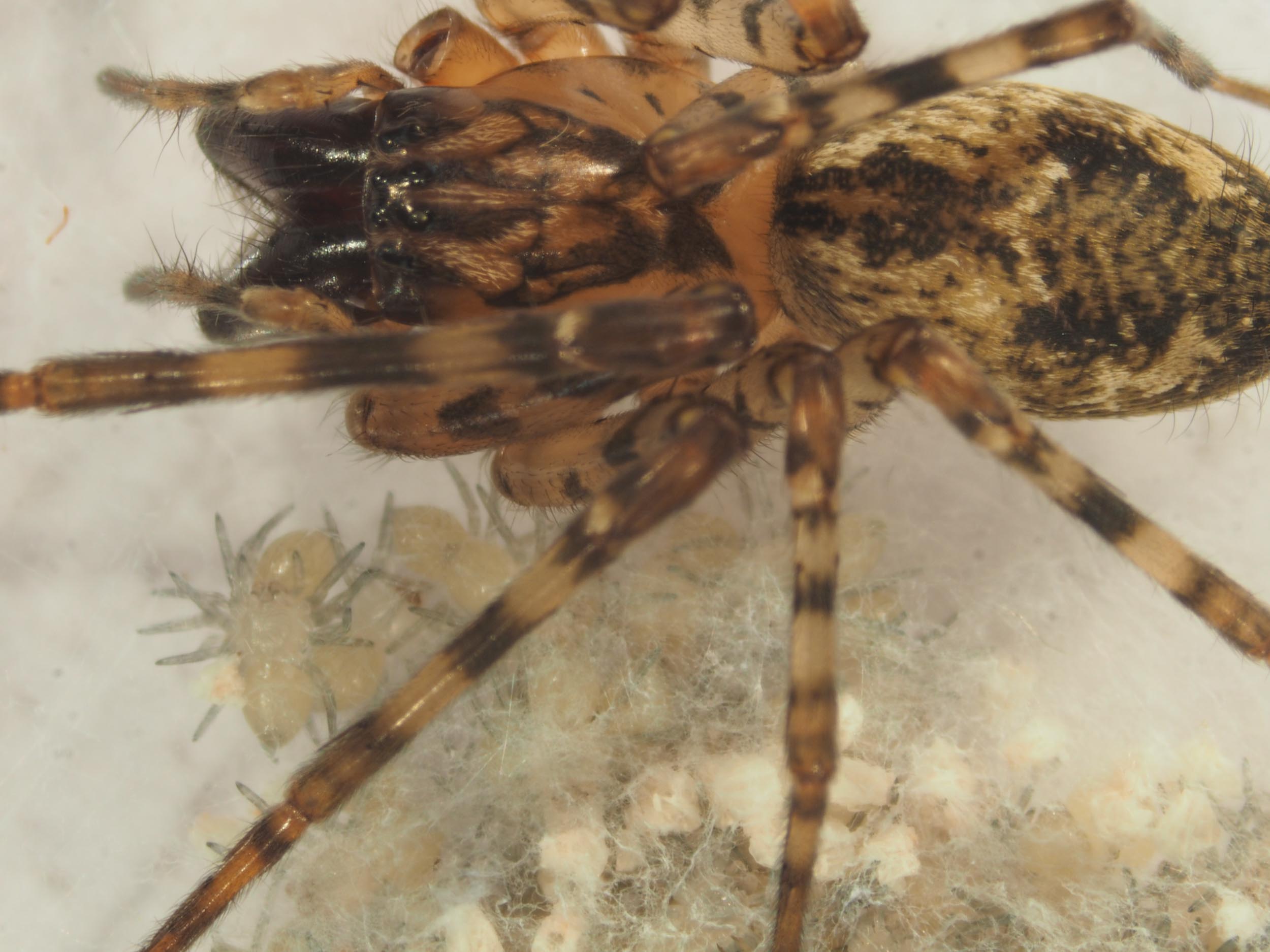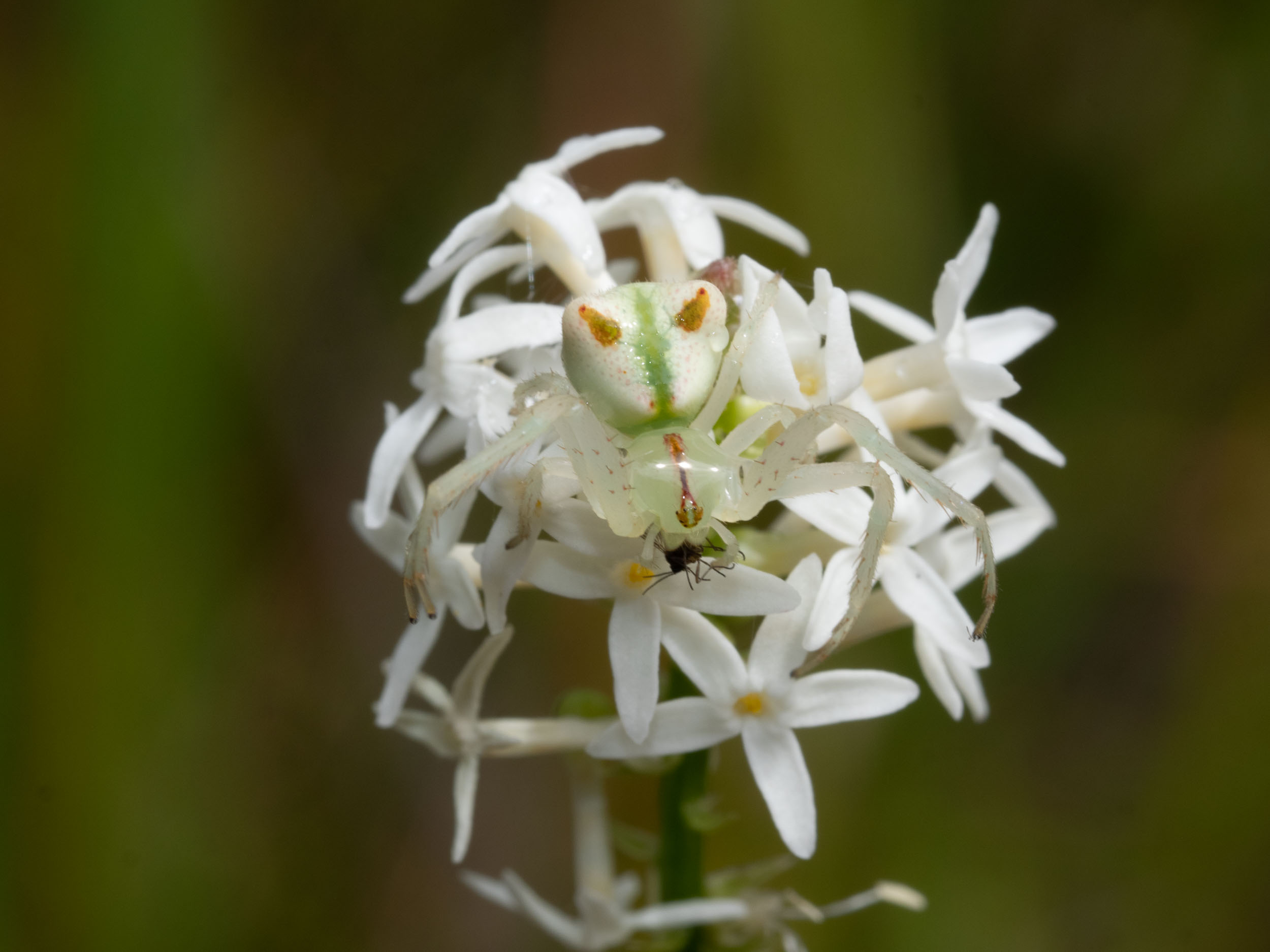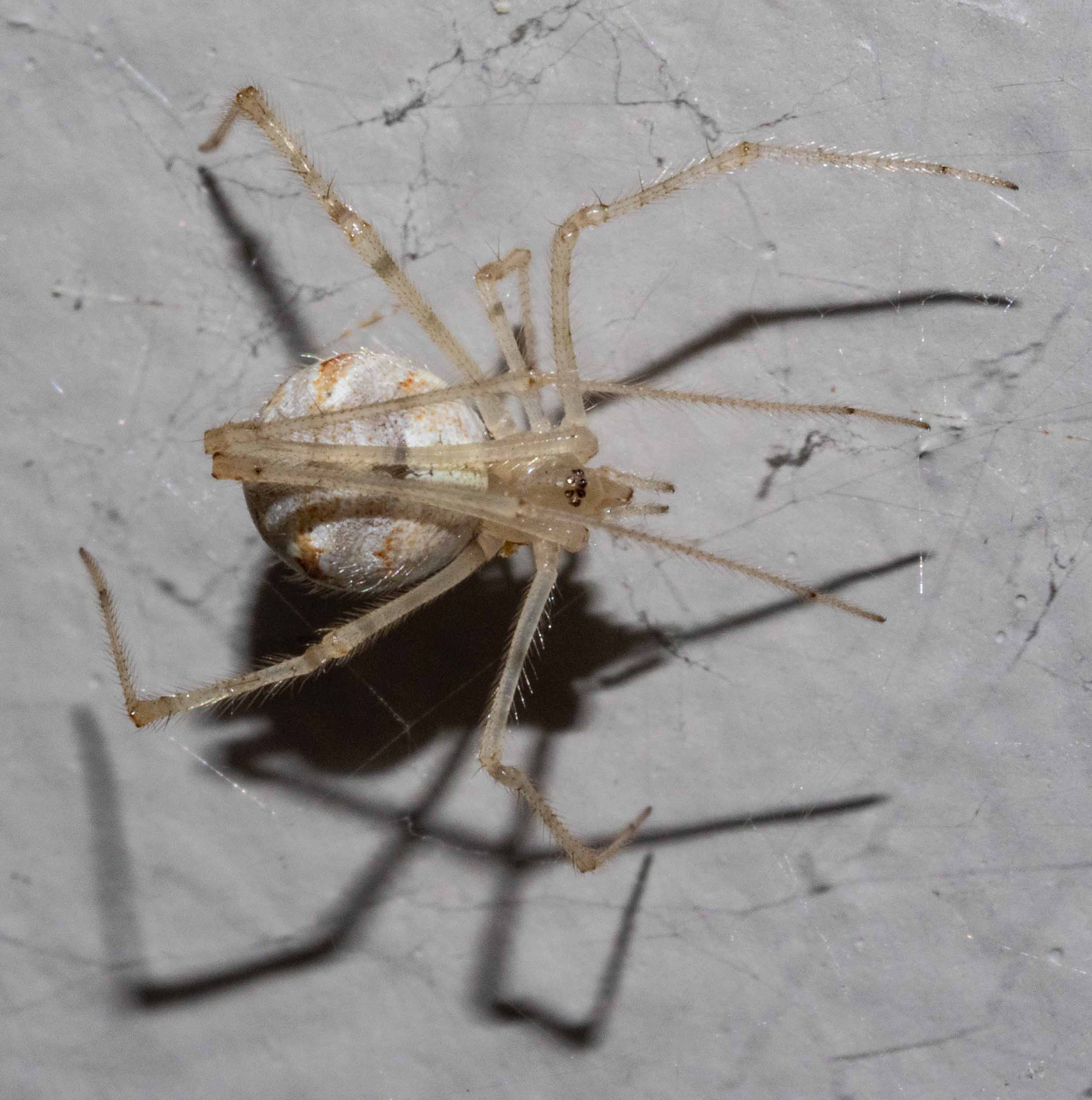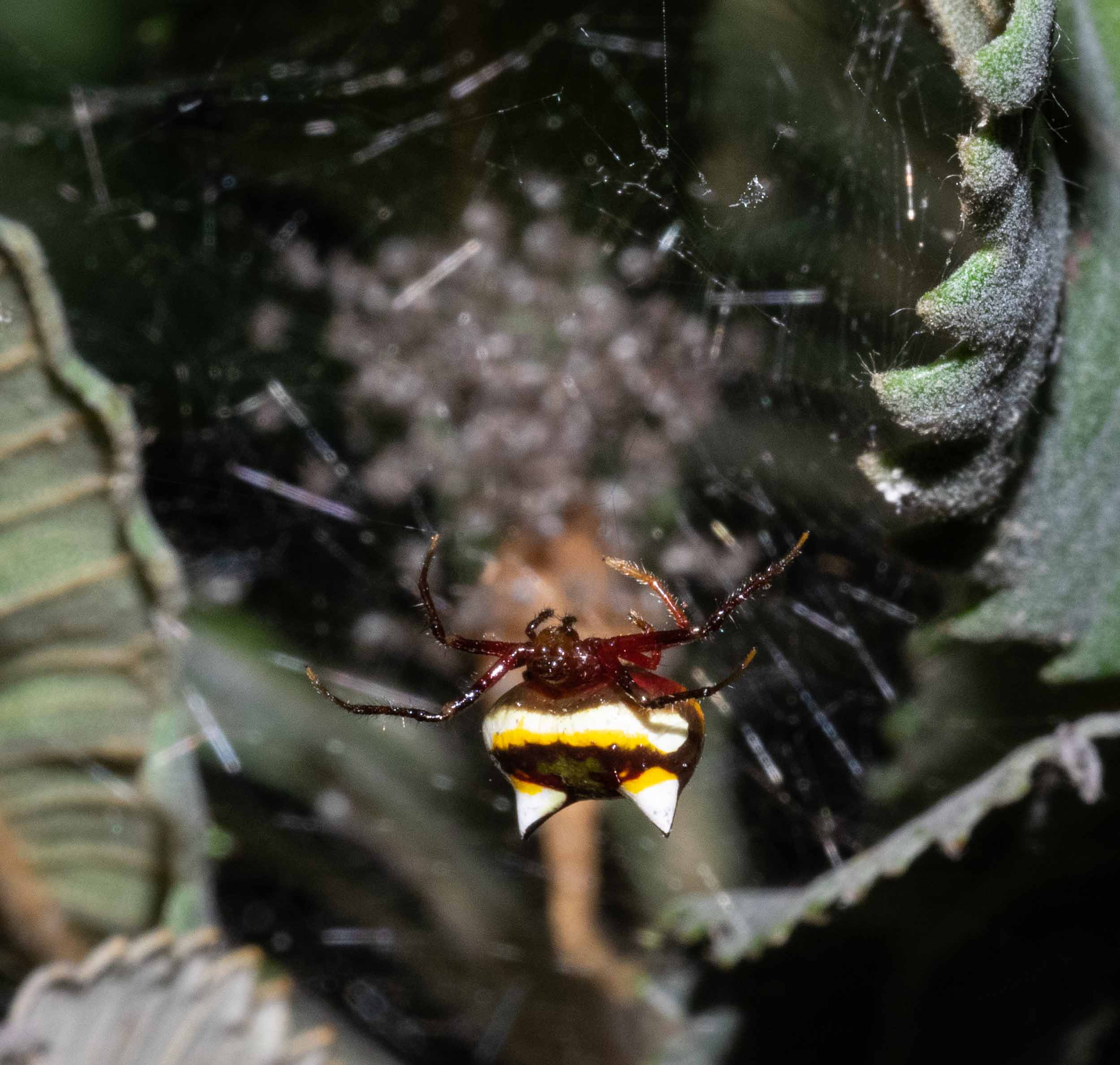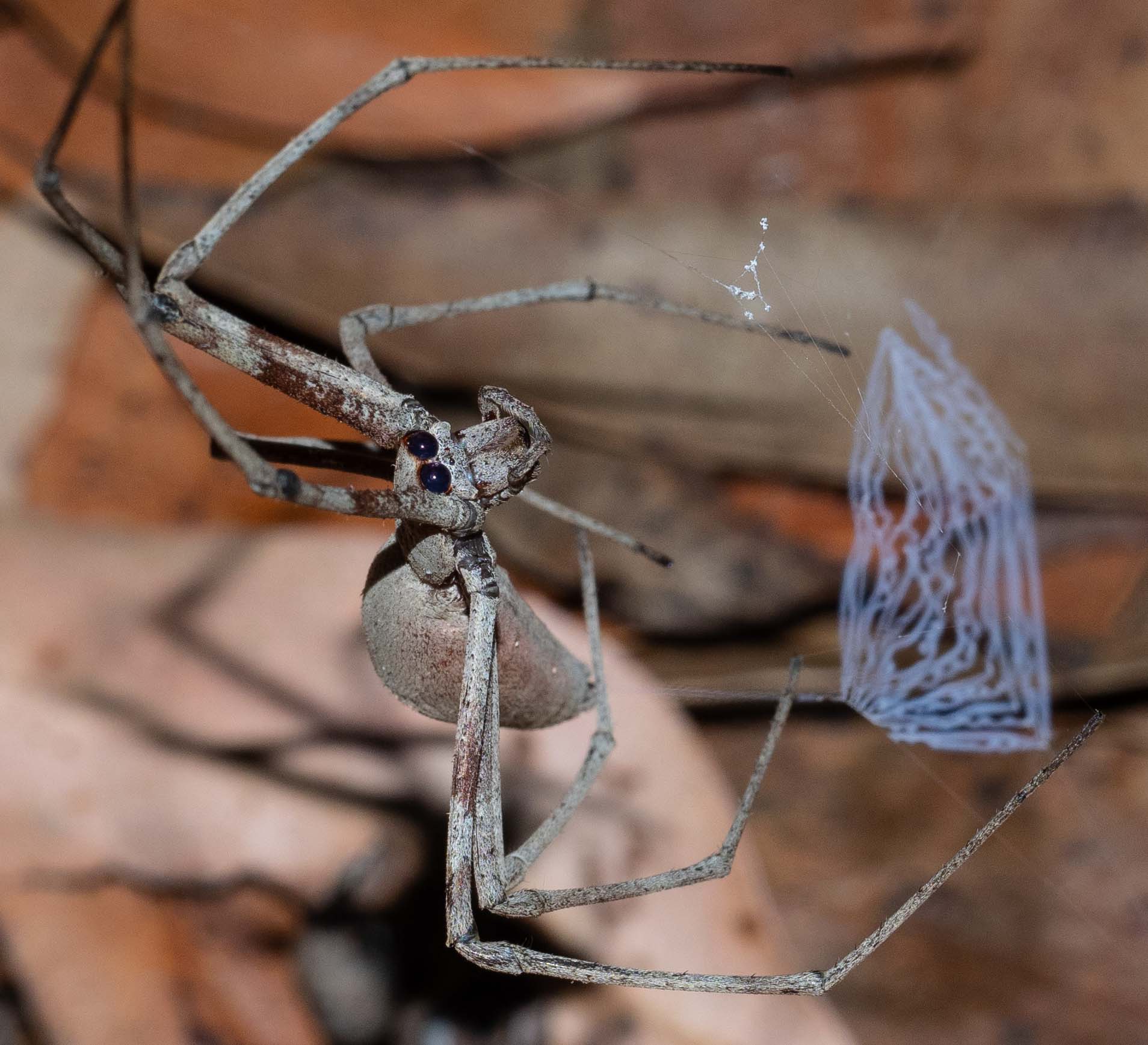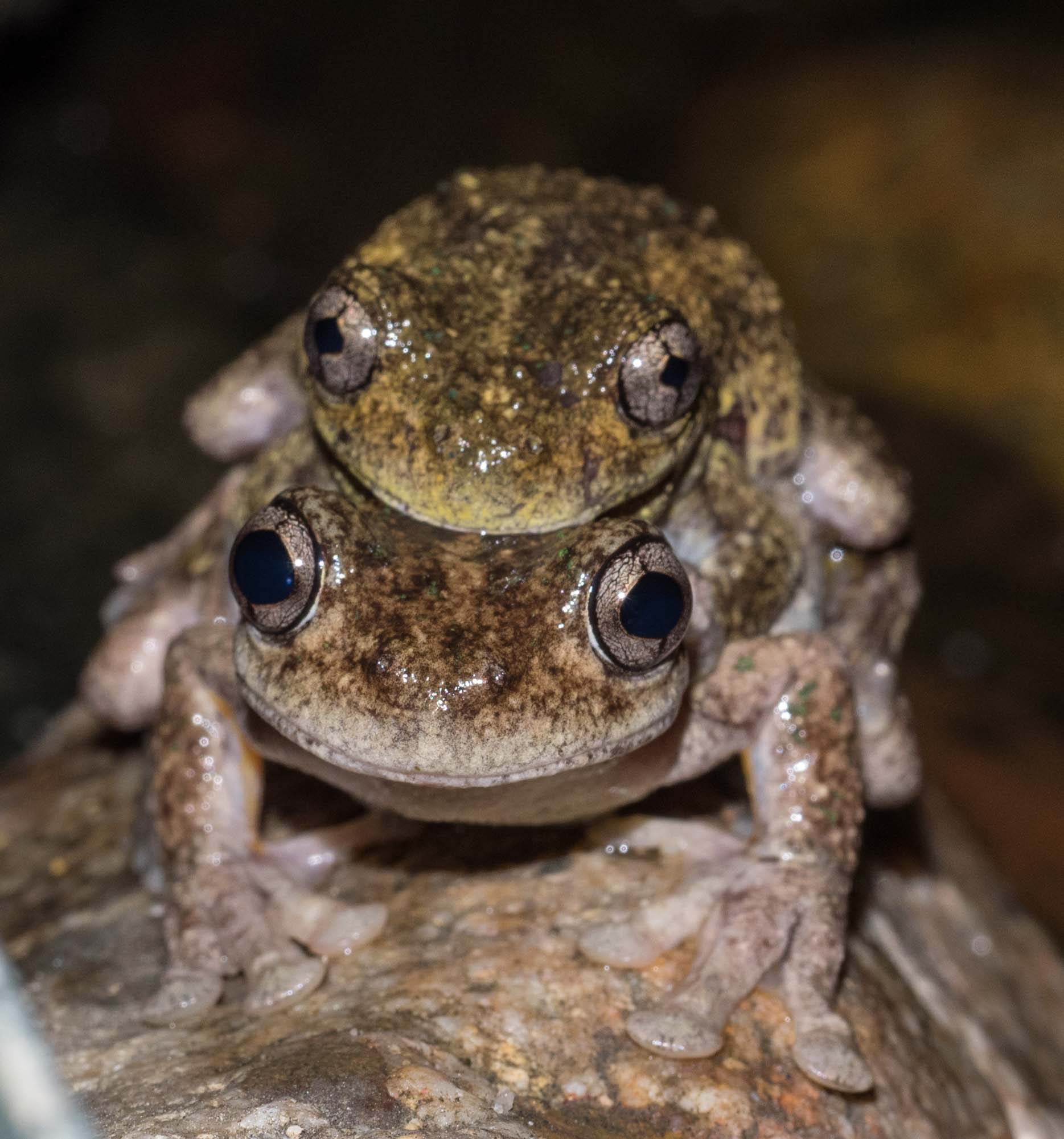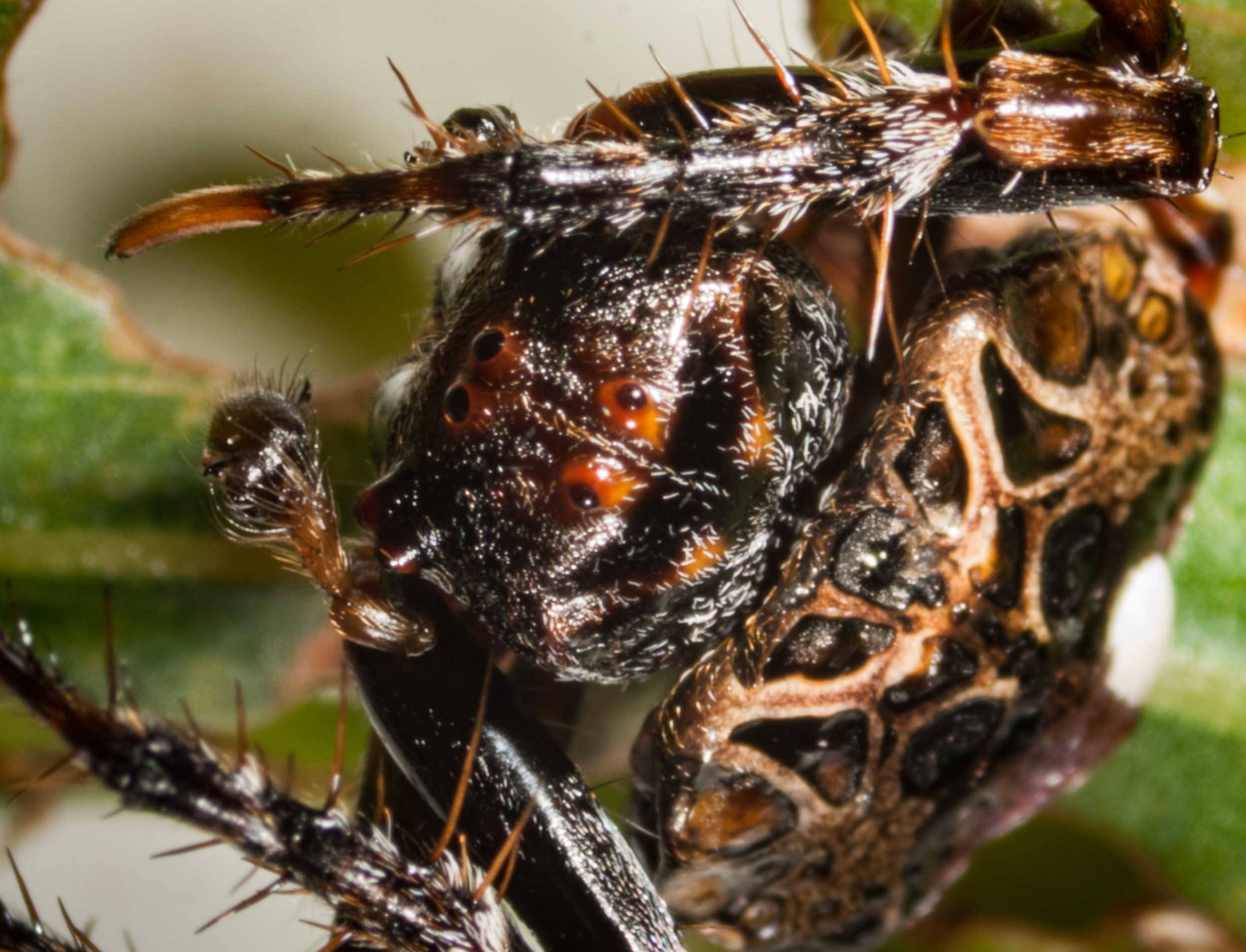Death in disguise

A small green spider hunts with patience and skill. Day after day, a single bouquet of tiny little daisies is her domain. Camouflaged and unmoving, her spiny legs are a death trap for the unwary. A very different spider hangs invisible among the grass. Her long body sways in the breeze, looking nothing like a spider at all.
These are just two intriguing spiders I’ve been watching this week. Both are familiar and common species, and both are masters of disguise.
Red-tipped Crab Spider (Sidymella rubrosignata)
This time last year I became rather captivated by these attractive little spiders. In particular, their ability to match their body colour to their flowers of choice. It is tempting to think this makes them invisible to their prey, but the story is not quite so simple. Indeed, little is known about this particular species, so I had to extrapolate from studies on related spiders (read more in Cryptic Spiders, Nov 2018).
The sit and wait strategy is certainly effective. I look in on her whenever I’m passing, and as often as not she is feeding on a freshly caught insect. Hoverflies and butterflies are her typical prey, with an occasional bee in the mix. Each day at least one insect, often more!
The crab spider is a fearsome predator, but she doesn’t always win. I was photographing this small bee feeding on the Ozothamnus, wondering if she would venture onto the adjacent flower head … where the crab spider waited, legs raised and motionless. The unwary bee did just that!
There was a struggle, I managed a few shots … and then the bee escaped! Looking at the photos it seems the bee managed a bite of her own, and perhaps this was enough to discourage the spider.
Another visitor. Today when I dropped by to check on my girl I discovered I wasn’t her only visitor!
The crab spider was subduing her most recent catch, a small butterfly, when a jumping spider edged its way across the flower head. Intrigued, I watched on as the tiny jumping spider cautiously approached … from above, from the side, and then from below.
Jumping spiders have exceptionally good vision so it’s safe to assume it knew what it was looking at. It is common for them to examine potential prey from a number of angles before making the leap to attack. It’s feasible that it would take on the other crab spider – many jumping spiders eat other spiders.
But in this case, I don’t think so. The butterfly certainly seemed to be the point of interest – and contention.
I drifted off before the jumping spider did, but when I returned a while later it was nowhere to be seen. The crab spider was unharmed and still in possession of her kill.
A prowling male. On a nearby flower I spotted him. Much smaller and far less colourful, but a closer look is quite convincing. Definitely a male … the swollen pedipalps are the clue. And he looks a match for published photos of males of this same species.
Unlike the female, he hasn’t taken up residence on a single flower. I’ve only seen him once, so presumably he’s on the prowl. And although I haven’t yet seen him with the female, I assume that is his ambition.
Whip Spider (Ariamnes colubrinus)
A night-time prowl with a torch is the easiest way to find whip spiders. On a still, warm night they shine in the torch light and are often quite active.
So I was feeling quite pleased with myself this week when I spotted this one by day.
Once they’re moving, the identity is clear. No other spider I know has such a long and flexible body, extending well beyond the spinnerets.
And a couple of days later, another one … this time with a meal!
The most common prey for whip spiders is other spiders. They snare them with long, hanging silken threads. Their long legs enable them to bundle the dangerous prey in silk, while remaining safely at arms’ length.
Whip spiders belong to the same family as Red-backed Spiders, and the very familiar Long-legged House Spider (Cryptachaea). These too use their long legs to advantage in prey capture … (read more about Cryptachaea in my earlier post, A formidable little spider).
Yet another in disguise
This one I discovered today – and I’ve yet to work out who it is. Tiny, less than 4mm from head to tail. Oddly shaped, looking ever so much like a eucalyptus fruit! Not a bad disguise, as the ground is littered with them.
The eye pattern points to a classic orb-weaver - subfamily Araneinae. Beyond that, I don’t know. A mystery for a later post.
[Update: I’m now confident that this tiny spider is Dolophones turrigera … the Turreted Wrap-around Spider. Here are the records on iNaturalist]































